Abstract
Pigeons chose between two schedules of food presentation, a fixed-interval schedule and a progressive-interval schedule that began at 0 s and increased by 20 s with each food delivery provided by that schedule. Choosing one schedule disabled the alternate schedule and stimuli until the requirements of the chosen schedule were satisfied, at which point both schedules were again made available. Fixed-interval duration remained constant within individual sessions but varied across conditions. Under reset conditions, completing the fixed-interval schedule not only produced food but also reset the progressive interval to its minimum. Blocks of sessions under the reset procedure were interspersed with sessions under a no-reset procedure, in which the progressive schedule value increased independent of fixed-interval choices. Median points of switching from the progressive to the fixed schedule varied systematically with fixed-interval value, and were consistently lower during reset than during no-reset conditions. Under the latter, each subject's choices of the progressive-interval schedule persisted beyond the point at which its requirements equaled those of the fixed-interval schedule at all but the highest fixed-interval value. Under the reset procedure, switching occurred at or prior to that equality point. These results qualitatively confirm molar analyses of schedule preference and some versions of optimality theory, but they are more adequately characterized by a model of schedule preference based on the cumulated values of multiple reinforcers, weighted in inverse proportion to the delay between the choice and each successive reinforcer.
Full text
PDF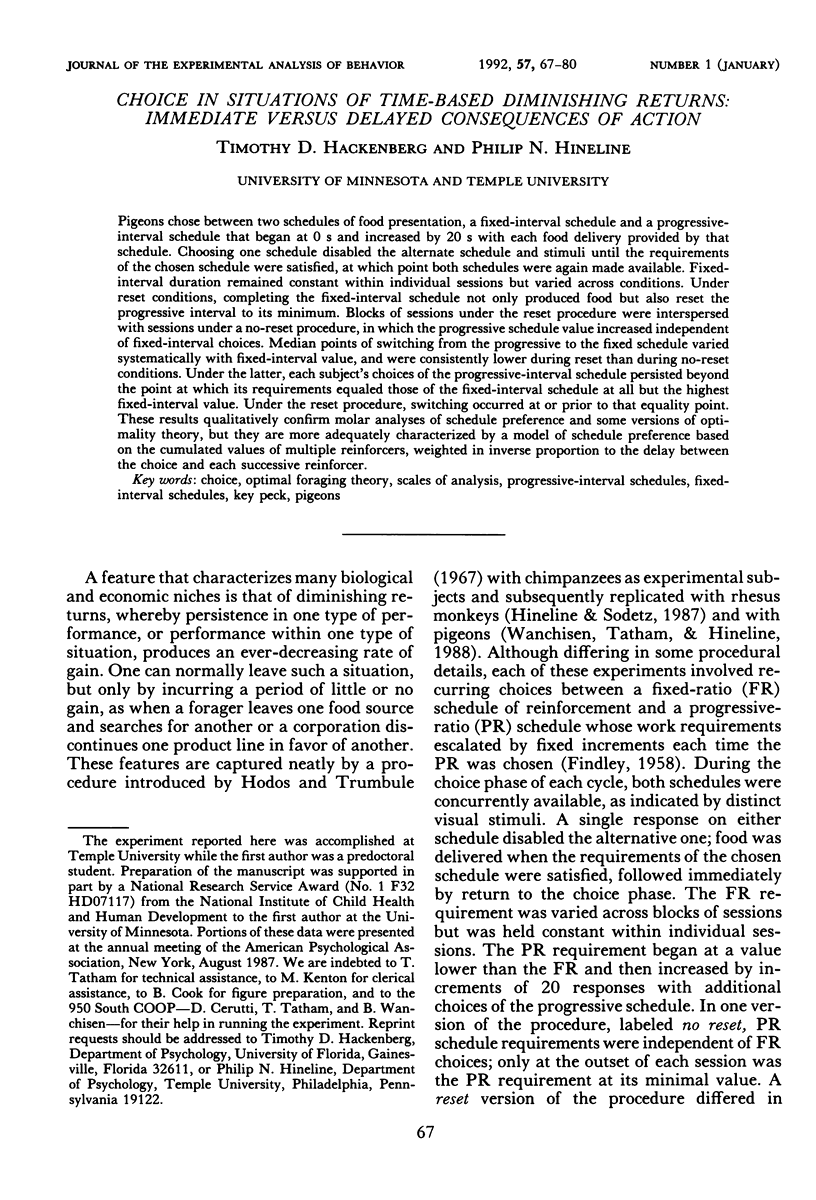

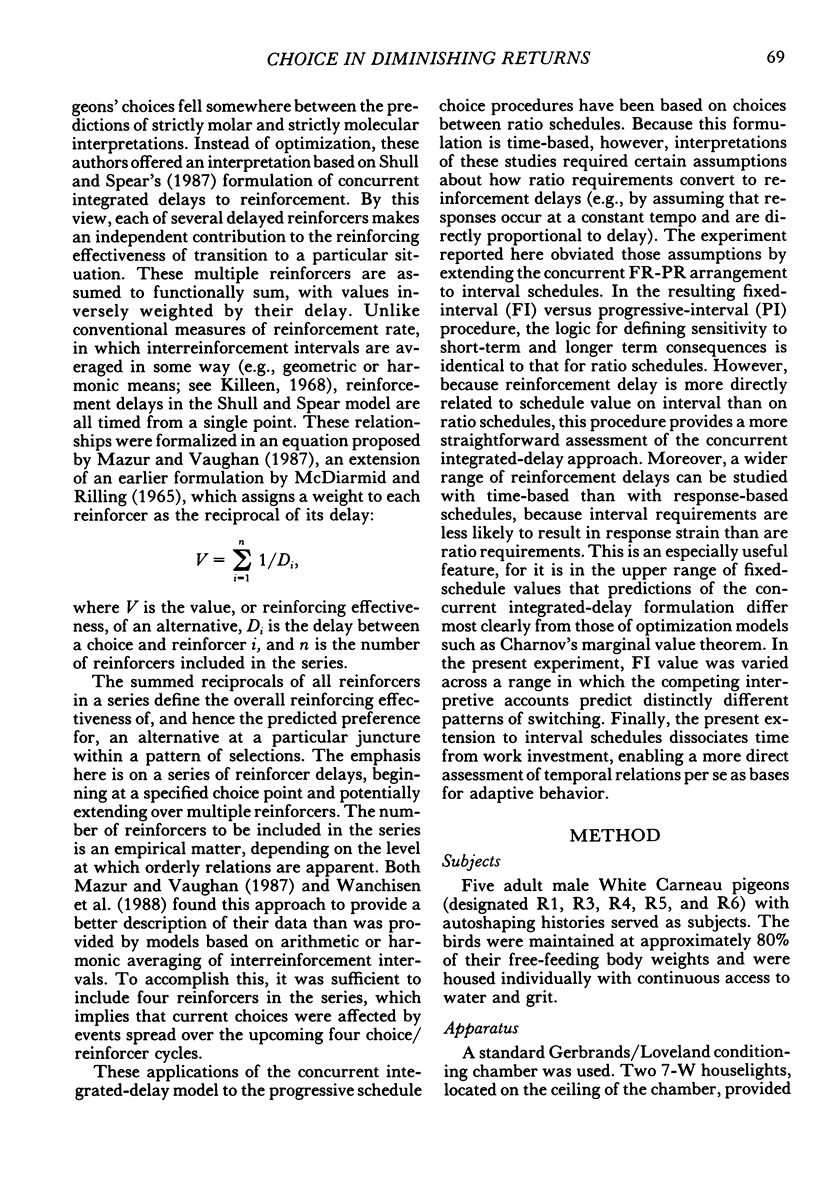

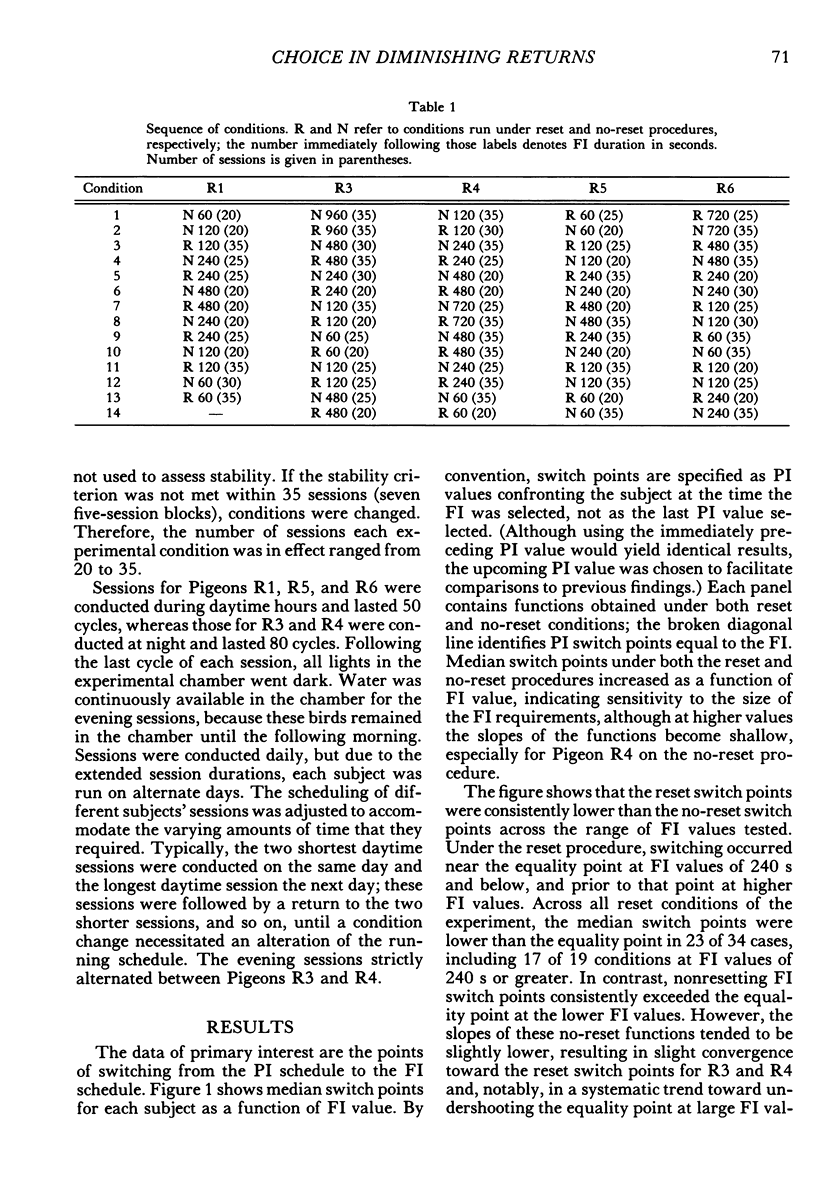


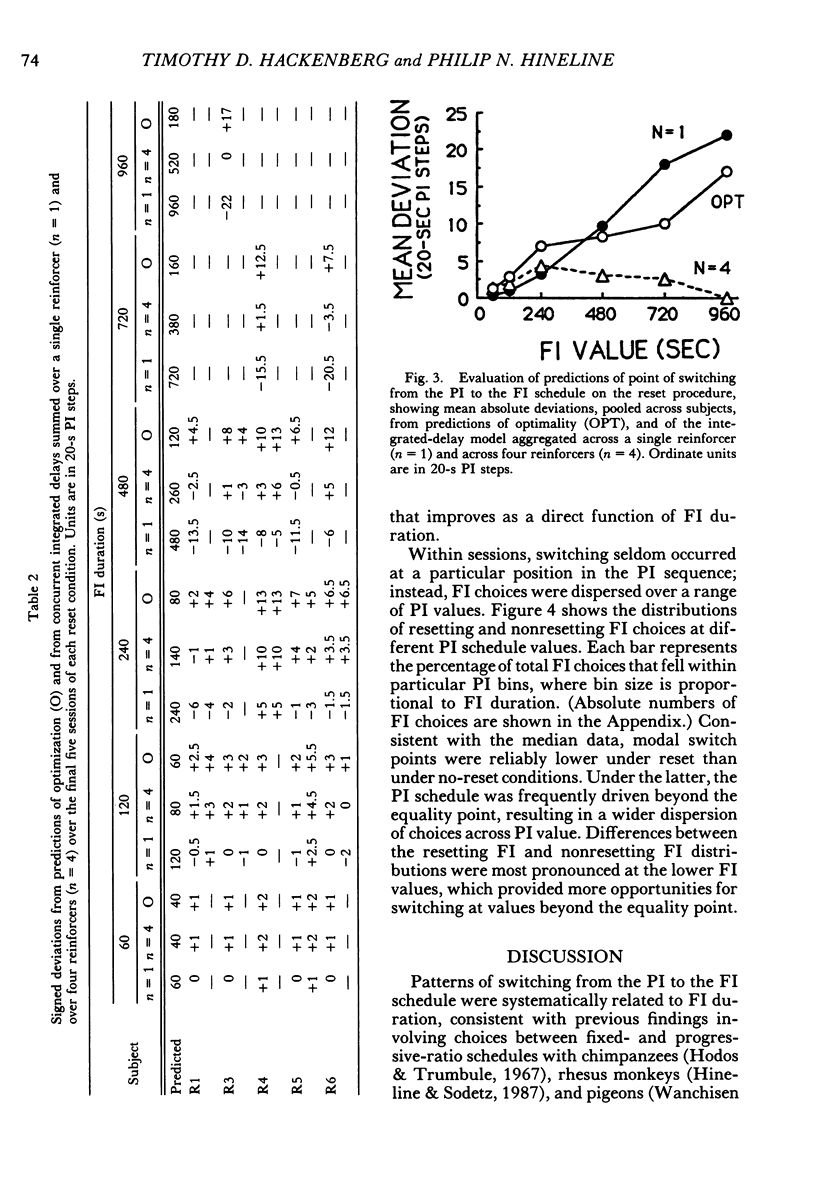
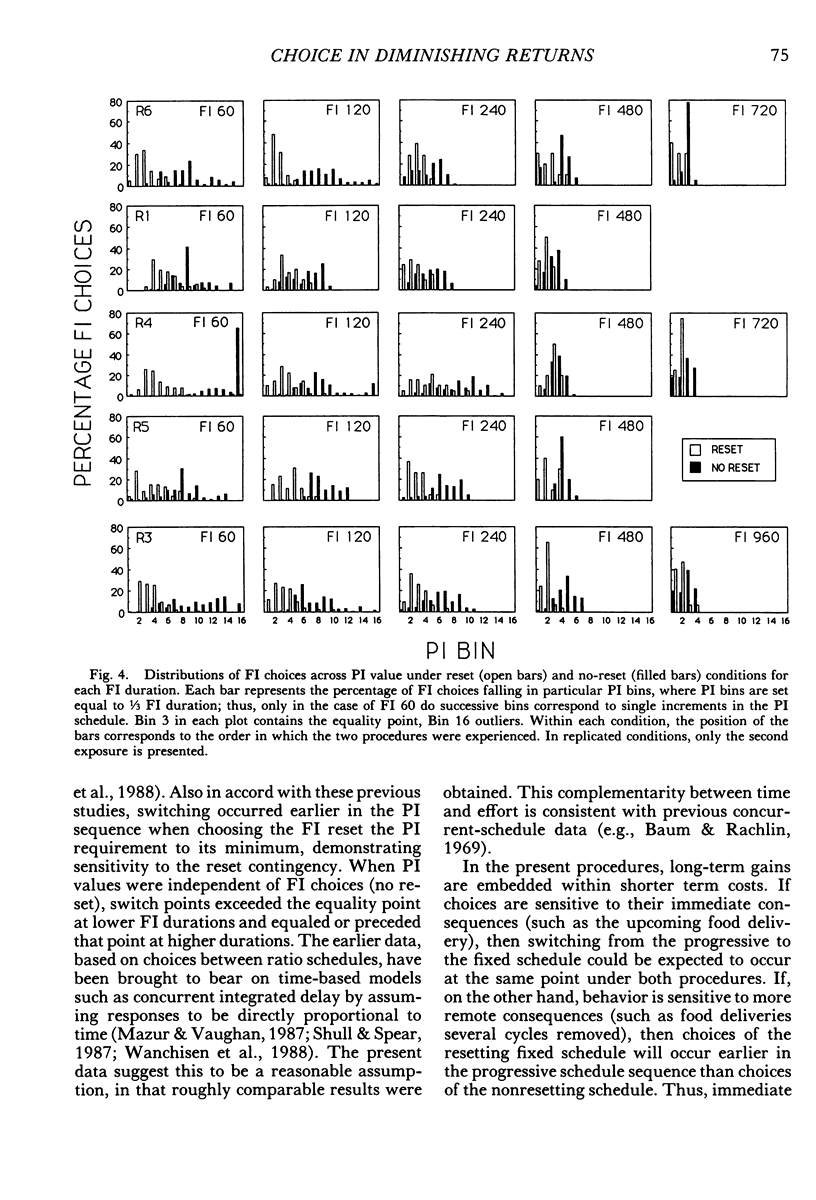


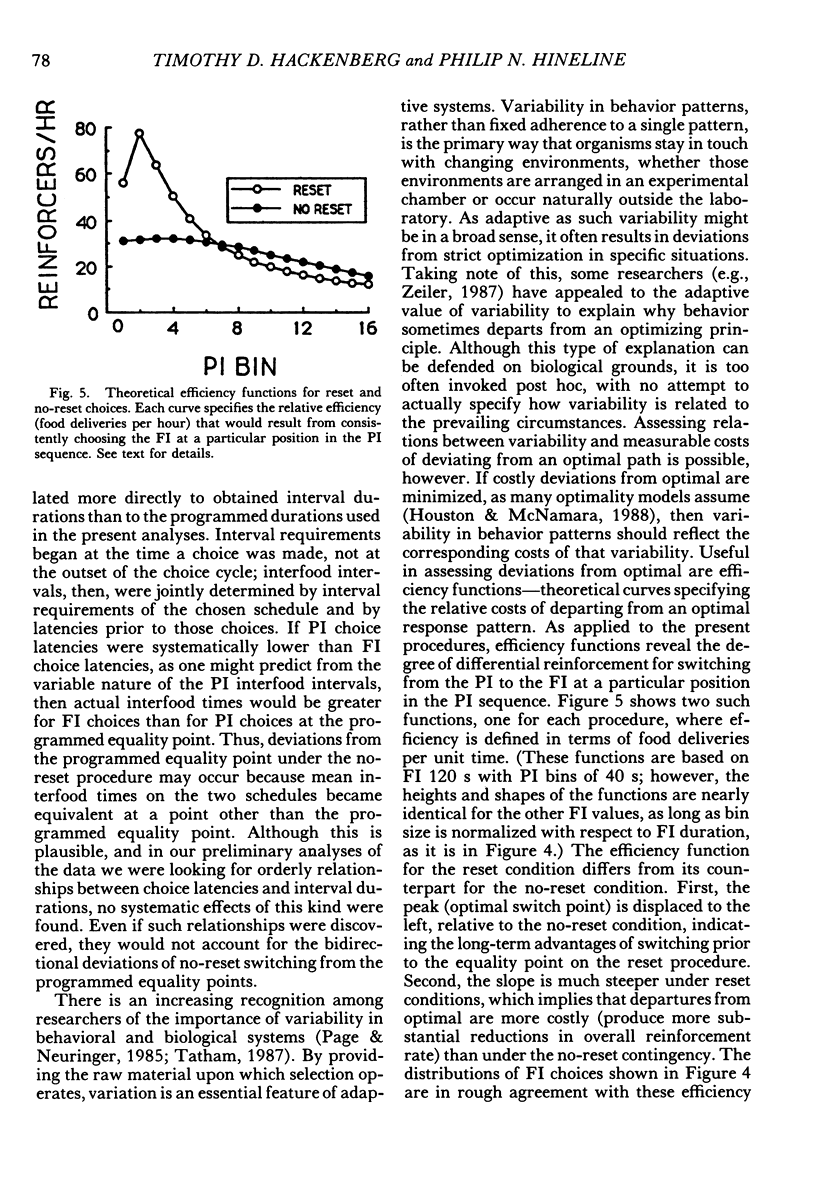


Selected References
These references are in PubMed. This may not be the complete list of references from this article.
- Baum W. M., Rachlin H. C. Choice as time allocation. J Exp Anal Behav. 1969 Nov;12(6):861–874. doi: 10.1901/jeab.1969.12-861. [DOI] [PMC free article] [PubMed] [Google Scholar]
- Charnov E. L. Optimal foraging, the marginal value theorem. Theor Popul Biol. 1976 Apr;9(2):129–136. doi: 10.1016/0040-5809(76)90040-x. [DOI] [PubMed] [Google Scholar]
- Findley J. D. Preference and Switching under Concurrent Scheduling. J Exp Anal Behav. 1958 Apr;1(2):123–144. doi: 10.1901/jeab.1958.1-123. [DOI] [PMC free article] [PubMed] [Google Scholar]
- Hineline P. N. Aversive control: A separate domain? J Exp Anal Behav. 1984 Nov;42(3):495–509. doi: 10.1901/jeab.1984.42-495. [DOI] [PMC free article] [PubMed] [Google Scholar]
- Hodos W., Trumbule G. H. Strategies of schedule preference in chimpanzees. J Exp Anal Behav. 1967 Nov;10(6):503–514. doi: 10.1901/jeab.1967.10-503. [DOI] [PMC free article] [PubMed] [Google Scholar]
- Houston A. I., Sumida B. H., McNamara J. M. The maximization of overall reinforcement rate on concurrent chains. J Exp Anal Behav. 1987 Jul;48(1):133–143. doi: 10.1901/jeab.1987.48-133. [DOI] [PMC free article] [PubMed] [Google Scholar]
- Killeen P. On the measurement of reinforcement frequency in the study of preference. J Exp Anal Behav. 1968 May;11(3):263–269. doi: 10.1901/jeab.1968.11-263. [DOI] [PMC free article] [PubMed] [Google Scholar]
- Lewis P., Gardner E. T., Hutton L. Integrated delays to shock as negative reinforcement. J Exp Anal Behav. 1976 Nov;26(3):379–386. doi: 10.1901/jeab.1976.26-379. [DOI] [PMC free article] [PubMed] [Google Scholar]
- Mazur J. E., Vaughan W., Jr Molar optimization versus delayed reinforcement as explanations of choice between fixed-ratio and progressive-ratio schedules. J Exp Anal Behav. 1987 Sep;48(2):251–261. doi: 10.1901/jeab.1987.48-251. [DOI] [PMC free article] [PubMed] [Google Scholar]
- Rachlin H., Green L. Commitment, choice and self-control. J Exp Anal Behav. 1972 Jan;17(1):15–22. doi: 10.1901/jeab.1972.17-15. [DOI] [PMC free article] [PubMed] [Google Scholar]
- Shull R. L., Mellon R. C., Sharp J. A. Delay and number of food reinforcers: Effects on choice and latencies. J Exp Anal Behav. 1990 Mar;53(2):235–246. doi: 10.1901/jeab.1990.53-235. [DOI] [PMC free article] [PubMed] [Google Scholar]
- Shull R. L., Spear D. J., Bryson A. E. Delay or rate of food delivery as determiners of response rate. J Exp Anal Behav. 1981 Mar;35(2):129–143. doi: 10.1901/jeab.1981.35-129. [DOI] [PMC free article] [PubMed] [Google Scholar]
- Silberberg A., Warren-Boulton F. R., Asano T. Maximizing present value: A model to explain why moderate response rates obtain on variable-interval schedules. J Exp Anal Behav. 1988 May;49(3):331–338. doi: 10.1901/jeab.1988.49-331. [DOI] [PMC free article] [PubMed] [Google Scholar]
- Staddon J. E., Hinson J. M. Optimization: a result or a mechanism? Science. 1983 Sep 2;221(4614):976–977. doi: 10.1126/science.6879199. [DOI] [PubMed] [Google Scholar]
- Timberlake W. A temporal limit on the effect of future food on current performance in an analogue of foraging and welfare. J Exp Anal Behav. 1984 Mar;41(2):117–124. doi: 10.1901/jeab.1984.41-117. [DOI] [PMC free article] [PubMed] [Google Scholar]
- Wanchisen B. A., Tatham T. A., Hineline P. N. Pigeons' choices in situations of diminishing returns: fixed- versus progressive-ratio schedules. J Exp Anal Behav. 1988 Nov;50(3):375–394. doi: 10.1901/jeab.1988.50-375. [DOI] [PMC free article] [PubMed] [Google Scholar]


